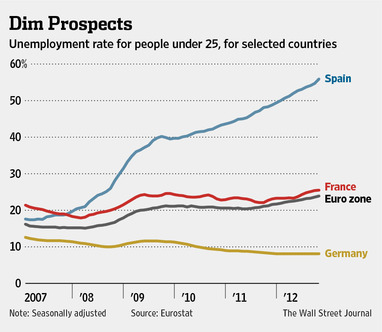As a defender of the process of innovation through creative destruction, I try to be alert to evidence on creative destruction’s benefits and costs. The highest cost is usually viewed as technological unemployment. The evidence below will have to be examined and, if sound, added to the costs.
(p. D6) Unemployment increases the risk of heart attack, a new study reports, and repeated job loss raises the odds still more.
. . .
After adjusting for well-established heart attack risks — age, sex, smoking, income, hypertension, cholesterol screening, exercise, depression, diabetes and others — the researchers found that being unemployed also increased the risk of a heart attack, by an average of 35 percent.
For the full story, see:
NICHOLAS BAKALAR. “Job Loss Raises Threat of Heart Attack.” The New York Times (Tues., November 27, 2012): D6.
(Note: ellipsis added.)
(Note: the online version of the story has the date November 26, 2012.)
The Dupre article mentioned above, is:
Dupre, Matthew E., Linda K. George, Guangya Liu, and Eric D. Peterson. “The Cumulative Effect of Unemployment on Risks for Acute Myocardial Infarction.” Archives of Internal Medicine 172, no. 22 (Dec. 10, 2012): 1731-37.
(Note: the Archives of Internal Medicine has been re-named JAMA Internal Medicine.)



